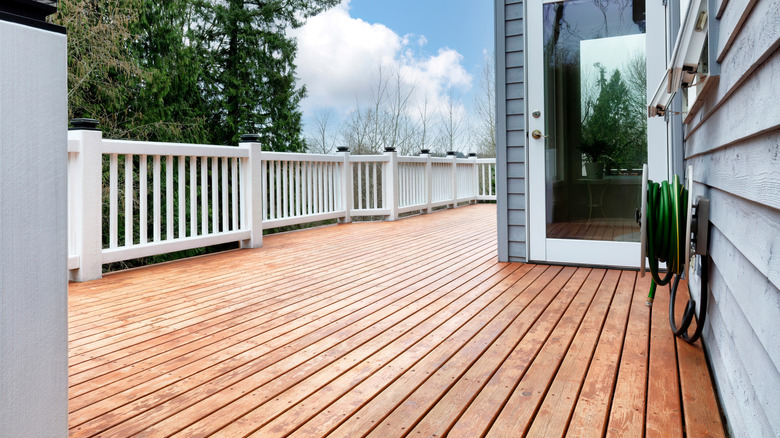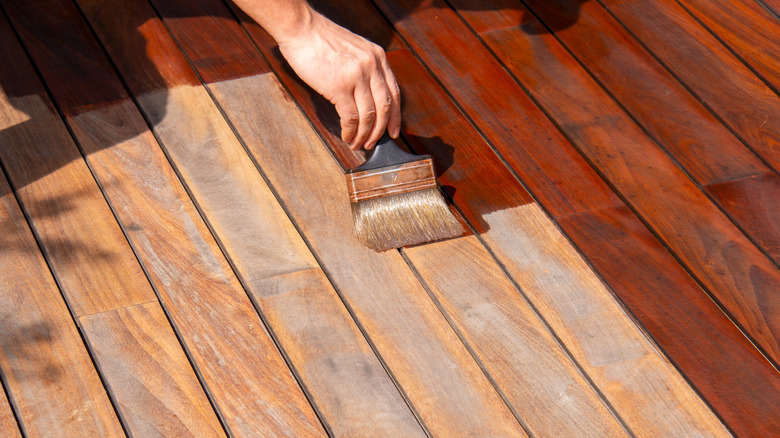Transparent Vs Solid: Which Wood Stain Is Best For Your Deck?
There are a lot of mistakes you want to avoid when designing your deck, and choosing the wrong wood stain is one of the biggest. When comparing wood stains for your deck, the decision usually comes down to transparent versus solid finishes. Both protect your deck, but each offers a different look and coverage level, and comes with a different maintenance schedule. So, which is the best wood stain for your deck? That depends on how much wood grain you want to see and how much upkeep you're willing to do.
Transparent stains, which include clear and semi-transparent, soak into the wood and show off its natural grain pattern. They're best for showing off high-quality boards like cedar or redwood and tend to fade more evenly over time. However, they don't offer as much UV protection and need to be reapplied every one to three years, depending on your climate.
On the other hand, solid stains offer more coverage and sit on top of the wood more like paint. They hide imperfections and weather well, making them a great choice for older decks that need more protection. With better UV and moisture protection, these types of stains usually don't need to be touched more than once every five years. But reapplying solid stains requires a little more prep work, like sanding or stripping.
What to consider when picking your deck wood stain
Not all wood stains are created equal — and not all decks face the same conditions. While the look of the stain may matter most to you, you also need to consider things like climate, deck usage, and even the surrounding landscape. These factors can really affect how well your stain lasts between touch-ups. If your deck is surrounded by trees that drop a lot of debris, or it tends to stay wet for a long time after rain, you'll need solid stain, since it offers better mildew resistance.
The age and texture of your deck boards will also play a role in which stain you choose. Rough or older boards tend to absorb more stain, which can affect the color, intensity, and how often you need to reapply the product. If your boards are newer or smooth, they'll soak in stain unevenly, and this is where semi-solid or solid stain is a better idea. Ultimately, the best wood stain choice will align with your home's environment, the type of wood your using, and how much maintenance you are willing to do.
Once you've settled on a stain type, the real trick is in the application and prep. Even the best of products will look bad and underperform if it is slapped on in the wrong conditions. If you want to stain your wood deck like a professional, make sure you prep your wood properly (no debris and dry), apply when your deck is between 50 and 90 degrees Fahrenheit, ensure no rain is forecast for the next 24 hours and use consistent brush strokes. To get the job done well, acquaint yourself with all the things you need to know before using wood stain.

